This is one of a series of blogs about the changing B2B Go-To-Market landscape. You can check out the others in the series at the bottom of this piece.
Jay is one of B2B’s most prolific makers. In between working in content marketing and digital strategy at Google and HubSpot, and joining VC firm NextView as VP of Brand, he’s written some of Velocity’s favorite books, launched multiple hit podcasts and writes a killer newsletter you should subscribe to right now.
Today he thinks of himself more as an “executive producer” helping brands, teams and individuals tell stories that earn trust and inspire action. We caught up with him to discuss how he does that.
Stan: Jay, what motivates you?
Jay: I want to help others make things that matter to their careers, companies, and communities. Algorithms prioritize the loudest voices, and the industry keeps chasing trendy new tactics that rise and fall. Meanwhile, the truth remains: It’s not reach but resonance that gets results.
I learned this firsthand during my time in B2B at HubSpot, Google, and beyond. We weren’t investing in the depth of our work; we were chasing reach. But if you want to build your brand and your audience, you need resonance. You really need to make them care.
Stan: Could you define resonance for us?
Jay: Resonance is the urge to act. People feel resonance when a message or moment aligns with them. It’s when something clicks, and they feel amplified and energized to take action. Think of it like two frequencies aligning. The first imparts energy to the second and amplifies it. That’s what great creative work does — it connects deeply and transfers energy to the audience.
This is why we recommend certain things — podcasts, books, ideas — to colleagues and friends. It’s not just that we enjoyed them; they resonated with us on a deeper level. And that urge to act, that resonance, is what precedes conversion. Without it, there’s no action. Most B2B marketing misses resonance.
Stan: I read your pieces about the problems of relying on best practices. To me, it seems like so much of B2B marketing is painted by numbers. Why do you think B2B doesn’t generally believe in storytelling and resonance?
Jay: I think it’s because for years, B2B didn’t have to. In the past, you could hang your shingle and say, ‘I serve other businesses by doing X,’ and that worked because you were practically the only player in town. Buyers didn’t have the infinite choice we see today. Back then, it all came down mainly to features and benefits.
Now, everything’s changed. We’re up against a tidal wave of voices, experts, products, and services all clamoring for attention. And our audiences aren’t just thinking about our categories all day — they’re consuming politics, sports, entertainment, and everything else.
Simply existing and saying, ‘Hey, we’re here!’ might have worked in a bygone era, but today, it’s not just insufficient — it’s broken.
Stan: I always tell clients we’re in a bare-knuckle street fight for attention, not just with competitors but with everything else. So what makes a great story that resonates?
Jay: Let’s talk about the word ‘great’ — it can send people in the wrong direction. There’s a difference between a great storyteller and an effective storyteller. A great story entertains you, but an effective story moves you. For example, your friend might tell a great story about their holiday, but you’re not, as a result, necessarily inspired to act or reflect on your own life. An effective story goes beyond mere entertainment; it prompts action.
There are four key elements of a compelling story.
- Align with your audience by showing that you understand their hopes, challenges, and goals.
- Agitate by highlighting the pain points and consequences of following the usual way of doing things.
- Assert your distinct perspective or premise as the solution.
- Invite them to take action.
The problem is, marketers tend to skip straight to the invite. They don’t do the work to align, agitate, or assert, so the invite falls flat. The best analogy I can give is this: Historically (and actually today in a lot of cases), B2B marketers would wait until someone running a road race was very close to the finish line, then jump in and say, ‘Hey, run the last mile with me!’ Most buyers go, ‘Hell no! Where were you earlier?’
We need to be helping, improving, inspiring, and resonating with buyers along the entire journey — not just at the very end. We have to help them do the very important job of buying, not just sell to them. Yes, your messaging and premise will repel the wrong people, but that’s okay. Those are the people who aren’t even in the race yet. Instead, focus on resonating with those at various stages of the buyer’s journey. That’s higher ROI and a straighter funnel, as opposed to a wasteful, broad top of funnel.
Stan: I recently spoke with Anthony Kennada from AudiencePlus, and his argument is that marketers’ job is to build an audience or a community. That means really understanding their needs and creating a place where they can connect. If you get your resonance right, your audience will come to you — you don’t need 48 channels and $400,000 a year to push it through. What does that look like in your work?
Jay: It’s a great question because with all the channels, changes, internal politicking, and emotional turmoil, we lose sight of the foundation of B2B marketing. And that foundation is simple: Earn trust and spark action.
That’s it. Can you earn their trust? Can you inspire action?
Where things go wrong is when we leap too far toward sparking action without doing the work to earn trust. That’s when marketing feels pushy, spammy, or ineffective.
The truth is, this process takes as long as your team is willing to look inward. Most of the answers are internal, not external. It’s about asking, ‘Why do we say this? What are we really trying to communicate?’ Most teams don’t take the time to be honest with themselves about their vision, and that’s why they fail to resonate.
When you do the work, everything else improves. Your ideas become undeniable, and you emerge as a leader in your audience’s mind. That’s the power of resonance.
Stan: And how important is authenticity to all of this?
Jay: Authenticity is such an interesting word. It’s become so fraught. I’m not even sure we know what it means anymore.
For example, if I were to be completely authentic right now, I’d tell you that I feel like crap most days. I have two very tiny kids, and life is chaotic. But professionally, I’ve made a promise to you as a listener, reader, client, or member — to show up as the best version of myself through this medium. That’s not me being inauthentic; it’s me honoring my commitment.
I prefer to think of authenticity in terms of origin. The word itself means ‘of undisputed origin.’ And if you look at origin, it’s just one step away from originality, which is what every marketer and communicator wants. We want to own an idea so distinctly that it stands out in the minds of our audience.
When I work with marketers, executives, or entrepreneurs, we start by uncovering what I call the ‘two-drink minimum’ version of themselves. Forget polished phrasing or wordsmithing — just give me your raw, honest rant. That’s the raw clay we work with.
Most people have a perspective, but it’s buried. They feel it, but they don’t articulate it crisply. That’s a problem because if your ideas aren’t immediately apparent, people won’t spend the time digging for them. It’s what I call ‘discovered value.’
The goal is to turn that discovered value into something apparent, something real, something motivating. A great storyteller conveys something quickly, so the audience instantly gets it and knows there’s depth behind it. It’s like a B2B sale — you earn the right to keep their attention one sentence at a time.
This applies even in casual interactions. Imagine someone asks you at an industry event, ‘What do you do?’ Instead of answering with your title, flip the script. Start with ‘You.’ For example, ‘You know how you run an agency? Because of that, you probably have this goal or challenge.’ Then, align, agitate, assert, and invite. It’s so much more effective than launching into what you do. Yet, we’re trained to lead with everything about ourselves, which makes us lose the audience right away.
Stan: We split the market into differentiation-based marketing (I want to show you how I’m better) vs. evangelical marketing (I’m going to sell you a new story or vision). It feels like the four-step strategy you’ve outlined is really appropriate for selling a new story or vision. Do you care about the difference between fast-growth challengers and more established commodity players when creating the story?
Jay: My dad is a software engineer and lifelong entrepreneur, and he likes to joke that big companies succeed despite themselves. I think he’s right. Big companies benefit from inertia. They’re like an object in motion — they stay in motion. But inertia only gets you so far. At some point, you have to ask, ‘Succeed to what ends? What heights?’
This is where a lot of large organizations struggle. They’re driven by momentum, not vision. Their content initiatives often feel nameless and faceless — things like company blogs that rank well on search but don’t build emotional connections. Meanwhile, personal brands are thriving. People follow personalities on social media, not brand handles. They trust individuals with distinct perspectives. That’s the missing piece for many big companies — they haven’t embraced the idea of creating talent.
If you look at media companies, the trust and connection start with the personalities. For example, I fell in love with Ezra Klein at Vox. Through him, I came to trust Vox. Later, I followed Bill Simmons from ESPN to The Ringer, and through him, I discovered other great personalities like Mallory Rubin and Jason Concepcion. That’s how you build loyalty — through talent, not faceless content.
This is the opportunity for marketers: Stop thinking like content farms and start thinking like media companies. Platform your people. Develop talent. That’s where the trust and opportunities lie.
Stan: You were doing podcasting and helping other people do podcasts. I think we even thought a couple of times about bringing you in to help Velocity. Are you still experimenting with formats now, or are you mainly focused on the strategic stuff?
Jay: Honestly, I’ve moved away from podcasting as a focus, but the lessons I learned still inform everything I do. When I launched my own show at a VC firm, we had a distinct concept and format. Within a few episodes, we were listed among the best shows in VC alongside firms with hundreds of episodes. That taught me the power of a strong premise.
Later, I started getting inbound requests to create podcasts for others. But it became clear that the real value wasn’t in the technical production — it was in the premise. The premise of the show reflects your overall brand and perspective. It’s the most valuable asset you gain, and it informs so much more than just the podcast.
Now, I think of myself as an executive producer, not just for podcasts but for thought leadership platforms. I help teams and individuals develop their IP — their intellectual property — and turn it into speeches, books, newsletters, or even podcasts. It’s all about crafting a system for higher-impact communication.
Ultimately, it’s a craft. Whether it’s a podcast or a keynote speech, it’s about creating something that’s not just functional but memorable.
Stan: When you meet someone for the first time who’s interested in what you do, do you know whether they’re right for you? Can you define what a fruitful relationship looks like?
Jay: I have two filters, and neither of them sounds like a job title. The first is that you have to care about differentiation. That concept has to matter to you. The second is more specific: if I say, ‘You’re smart enough, you’re expert enough, but your IP isn’t strong enough to differentiate and resonate,’ and you respond with, ‘Yeah, how do I fix that?’ then you’re my person.
But if you get defensive or precious about your ideas, we won’t work well together. I need honesty. I’m not here to repackage what you already have; I’m here to help you build something stronger.
To me, the best work happens in partnerships — like when musicians hire a producer like Rick Rubin to push them creatively. That’s where the magic happens. It’s not about tweaking; it’s about creating something truly original.
Stan: We always say to clients we have one big advantage over you and one disadvantage. The disadvantage is that we don’t work for your company, so we may not know your market as well as you. But the big advantage is that we don’t work for your company, so we’re not bogged down by the last two years.
Jay: Exactly. That outside perspective is invaluable. Let me give you an example.
I work with Sarah Stockdale, founder and CEO of Growclass. She runs an education company for marketers and has incredible ideas, most of which weren’t showing up publicly.
She has this concept called the Whisper Effect. Her premise is that success isn’t about being a lone genius — it’s about community. Promotions and opportunities happen through and with other people.
In one of her speeches, she explains how whispers — small, viral moments — drive bottom-of-funnel sales. It’s not the top-of-funnel viral content we typically think of; it’s much more targeted and impactful.
The key is to take a basic concept like ‘know your buyer’ and go deeper. What does it mean to whisper? How do you teach others to adopt this approach? By digging into the premise, Sarah turned a good idea into a transformative framework.
That’s the work I love — helping people take their raw ideas and turn them into something that resonates deeply.

Founder
Stan started out in university teaching before moving into military intelligence. By a circuitous route, he found himself heading up the UK’s biggest tech PR company (Brodeur) and flogging it to Omnicom.
Published in:
B2B performance marketing
b2b-marketing
content performance KPIs

Enjoyed this article?
Take part in the discussion



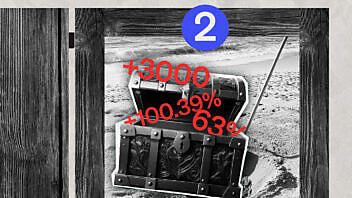
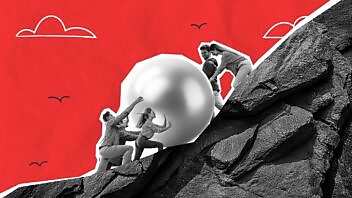


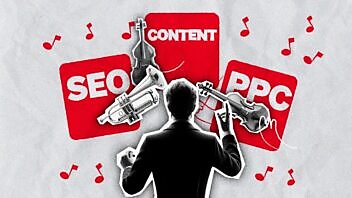


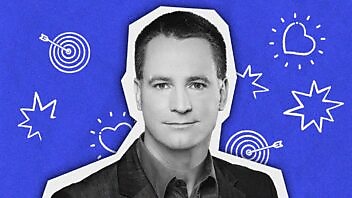

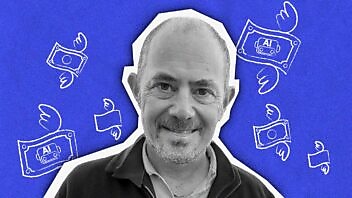


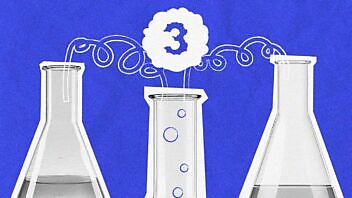


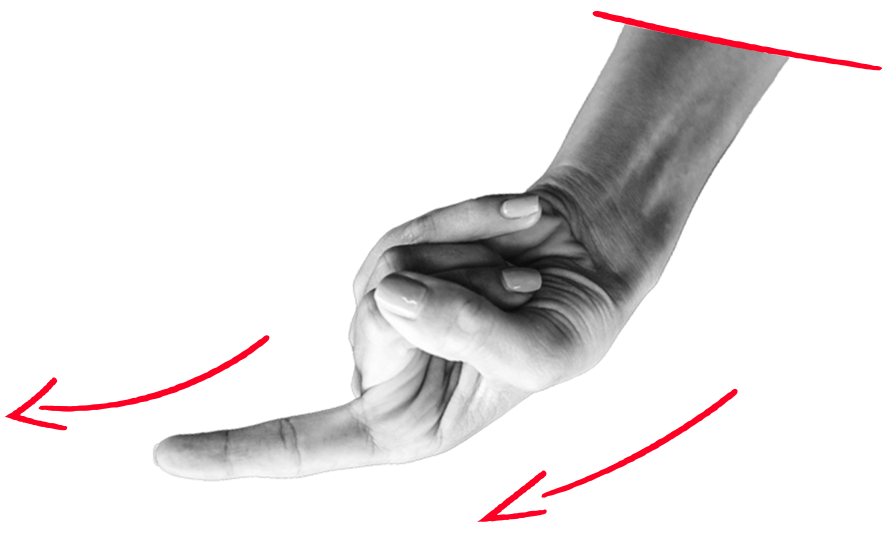

Comments
There are no comments yet for this post. Why not be the first?